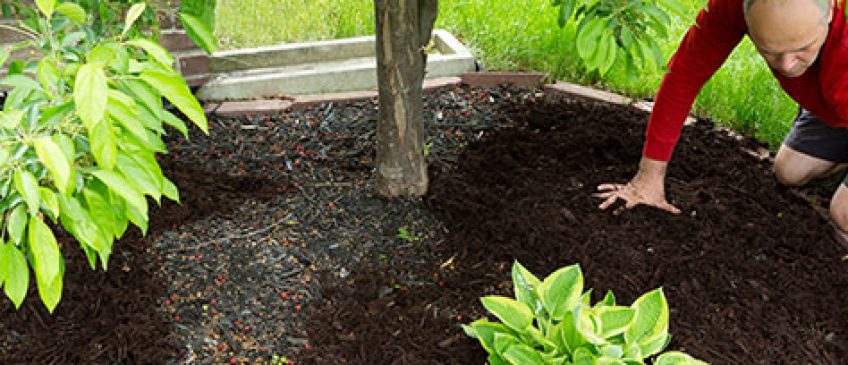As the spring weather approaches, you should not forget about the power of mulching. This refers to the act of adding a protective barrier of mulch around your plants and over your soil. This protective covering is typically comprised of pine needles, cocoa bean shells, bark or wood chips, and straw. Mulch can offer your garden a variety of benefits that include weed suppression, moisture retention, soil nutrients, and more. For further details on mulching and how to use it in your garden, read on:
Organic vs. Inorganic Mulches
There are two different categories of mulches: organic and inorganic. Organic mulches come from natural materials that decompose as time goes on and must be replaced after several years. These include pine needles, wood chips, grass clippings, and bark. They attract slugs and insects as well as the birds that consume them. Inorganic mulches are different than organic because they do not decompose or attract pests. Inorganic mulches include pebbles, stones, black plastic and landscape fabrics, and geotextile mats.
Determining Amount of Mulch Needed
In order to determine how much product will be needed, the surface area and the desired depth of coverage should be calculated. Keep in mind that there are 27 cubic feet in a cubic yard and one cubic yard will cover a 324 square foot area with an inch of material. When you figure out the square footage of your garden bed, you should multiply it by the depth desired in inches and then divide it by 324 square feet to calculate the amount of cubic yards necessary.
Application Tips
Prior to applying any type of garden mulch to a surface, it’s important to weed the area by spreading a layer of compost materials over the entire bed of plants. Compost should be kept 2 to 3 inches away from the stems of woody plants in order to avoid decay caused by rodent damage and wet mulch during the winter months.
Additionally, garden mulch should be kept 6 to 12 inches away from building walls. This is because termites nest in the soil and consume materials that are composed of cellulose. Since termite treatments are typically applied to the soil around buildings, keeping compost away from walls will stop termites from utilizing it as a platform to cross soil that has already been treated.
For trees that have recently been planted, compost should be applied in a circle of 3 to 4 feet in diameter and maintained for at least 3 years. Trees that have been around for quite some time should receive garden mulch in a circle that is approximately 2 feet in diameter.
While mulching, try to avoid application that is too thick. When this occurs, soil can become wet and lead to problems with root and stem rotting while depriving plants of oxygen. Layers should not be more than 1 to 3 inches thick.
By implementing the tips above in your garden, your soil and plants will reap many advantages. If you would like to hire a professional, search for a landscaping or lawn care company in your area. We have no doubts that you’ll be pleased with the health and vitality of your garden.

